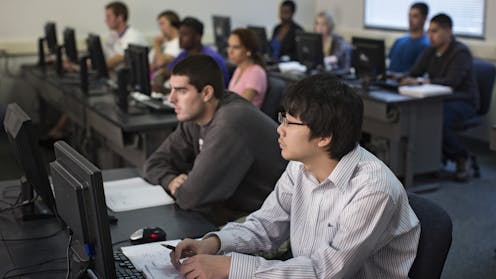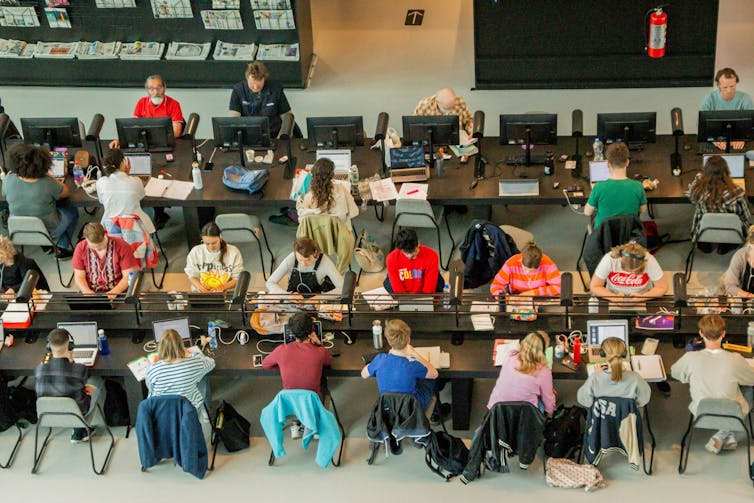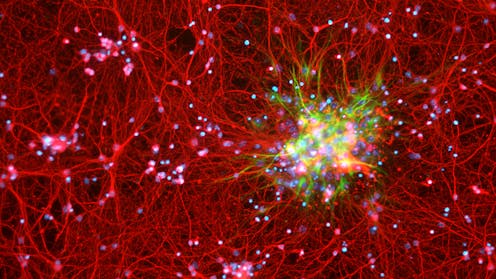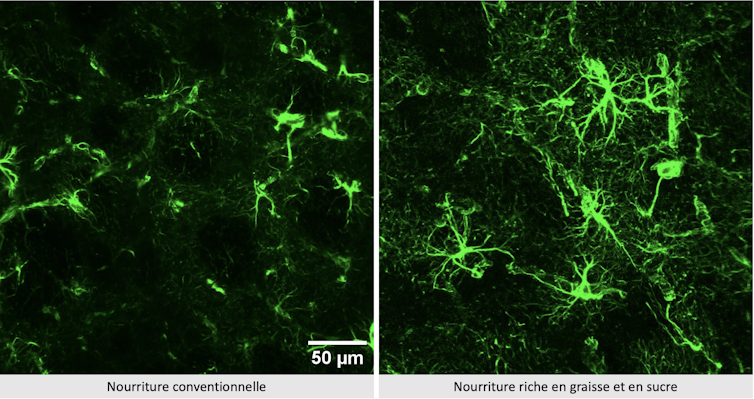Source: The Conversation – France (in French) – By Adel Ben Youssef, A. Professor, Université Côte d’Azur

Parcourir le monde sans quitter son salon : c’est désormais possible grâce au tourisme virtuel. Mais ces expériences numériques sont-elles une incitation au voyage réel ou pourraient-elles s’y substituer durablement, notamment face aux contraintes écologiques ?
Il y a trente ans tout pile, Nintendo sortait l’ancêtre du casque de réalité virtuelle (VR), le Virtual Boy. Si à l’époque, l’équipement a fait un flop, trois décennies plus tard ces casques redessinent les contours de pans entiers de l’économie… comme le tourisme.
Le tourisme virtuel désigne l’ensemble des expériences touristiques réalisées à distance, via des médias numériques. La littérature économique et en gestion propose de définir le tourisme virtuel comme « l’ensemble des activités des personnes qui, pour apprendre ou se divertir, s’immergent dans une réalité virtuelle (VR) afin d’avoir l’illusion de changer de lieu ». Ce tourisme dématérialisé s’oppose au tourisme in situ, c’est-à-dire le voyage physique sur place, avec son lot de déplacements, de rencontres et de sensations réelles.
En 2020-2021, confinements et restrictions ont empêché des millions de personnes de voyager. Faute de pouvoir se déplacer, beaucoup ont découvert les visites virtuelles pour satisfaire leur envie d’évasion. La demande pour ces expériences a explosé. Le musée du Louvre a enregistré plus de 10 millions de visites virtuelles en deux mois seulement. Aujourd’hui, ces offres numériques continuent d’attirer les utilisateurs, devenant une part intégrante du paysage touristique. Une question demeure : le tourisme virtuel est-il devenu une option sérieuse pour la durabilité du tourisme ?
Amuse-bouche numérique
L’arrivée d’une nouvelle vague de technologies numériques appelées Industrie 4.0 au début des années 2010 a permis l’éclosion d’applications sérieuses en matière de tourisme virtuel. Ces applications permettent, sans quitter son salon, de voyager de manière immersive dans divers endroits du monde réservés jusque là aux touristes « in-situ ». La question s’est alors imposée d’elle-même : dans quelle mesure le tourisme virtuel remplacerait les vacances réelles ?
Pour beaucoup de voyageurs, la réalité virtuelle reste surtout un moyen séduisant de découvrir une destination avant d’y aller physiquement, une sorte d’amuse-bouche numérique. Et cela fonctionne particulièrement auprès des jeunes générations. En 2023, 34 % des personnes âgées de 16 à 24 ans et 35 % des 25‑34 ans utilisaient la réalité virtuelle. À l’inverse, certaines circonstances précises – contraintes écologiques, frein financier ou raisons sécuritaires – poussent une partie des utilisateurs à envisager la réalité virtuelle en substitution au vrai voyage.
Coût des équipements
Nous sommes encore loin de confondre tourisme virtuel et réel. La réalité virtuelle, même immersive, reste privée des sensations physiques et des rencontres spontanées qui font la richesse d’un vrai voyage. Aucune simulation ne restitue complètement les sensations réelles, telles que les parfums, les goûts ou les rencontres spontanées, éléments essentiels qui font tout le charme d’un vrai séjour touristique.
À lire aussi :
Impossibles voyages : le confinement, révélateur de notre rapport au monde
Un autre handicap à l’heure actuelle concerne les coûts des équipements. En France, l’Apple Vision Pro est vendu à partir de 3 999 euros. Ces coûts, jugés prohibitifs, ne permettent pas la démocratisation des usages. Cependant, de nouveaux casques associés aux smartphones, générant des expériences immersives de moindre qualité, arrivent massivement sur le marché. Des modèles autonomes comme le Meta Quest 3, à environ 549 euros, ou sa version plus abordable, le Meta Quest 3S, à environ 329 euros, rendent déjà la réalité virtuelle plus accessible au grand public. Leurs prix devraient encore baisser, comme pour toutes les technologies émergentes.
Gain écologique
Le vrai gain du tourisme virtuel se situe sur le plan écologique et environnemental. Le tourisme virtuel s’impose de nos jours comme une option durable pour limiter les impacts écologiques du tourisme. Une étude récente montre que le tourisme virtuel contribue à la réalisation de 12 des 17 des Objectifs de développement durable (ODD) et de 42 de leurs 169 cibles (25 %).
Remplacer un vol long-courrier par un voyage en réalité virtuelle représente un gain évident : aucun déplacement physique, c’est une empreinte carbone quasiment nulle par rapport au tourisme traditionnel. Par exemple, selon l’Agence de la transition écologique (Ademe), un seul vol aller-retour Paris-New York génère environ 1,7 tonne de CO₂ par passager, soit l’équivalent des émissions moyennes annuelles d’un Français pour le chauffage de son logement.
Eau de Venise limpide
Cette dimension a été mise en lumière lors des confinements, entre janvier et avril 2020, la réduction mondiale des émissions de CO2 a atteint environ 1 749 millions de tonnes, soit une baisse de 14,3 % par rapport à 2019. Elle est principalement due au secteur des transports (58 %).
À Venise, l’arrêt soudain du trafic touristique a rendu l’eau exceptionnellement limpide, permettant d’observer à nouveau les poissons dans les canaux.
Le tourisme virtuel apparaît comme une piste pour un tourisme plus durable et une réponse concrète au surtourisme dans des lieux très fréquentés ou fragiles comme le Machu Picchu 5pérou), Pompéi (Italie) ou la tour Eiffel à Paris. L’Unesco a lancé, dès 2021, des visites virtuelles immersives sur le Machu Picchu afin de détourner une partie du public, de soulager les infrastructures locales et de préserver ce site emblématique.
Ces voyages virtuels démocratisent l’accès à des lieux lointains ou difficiles d’accès. Les personnes à mobilité réduite (16 % de la population mondiale, selon l’Organisation mondiale de la santé), les familles à budget modeste ou les seniors qui ne peuvent plus prendre l’avion, peuvent découvrir le monde depuis chez eux. Cette accessibilité accrue, combinée à l’absence de frais de transport et d’hébergement, fait du tourisme virtuel une option bien plus économique pour le voyageur moyen. Cette dimension sociale est encore faiblement explorée.
Visite virtuelle avant le voyage
Des agences de voyage intégraient des visites immersives de leurs séjours, et des compagnies aériennes expérimentaient la réalité virtuelle en vol pour divertir leurs passagers. La compagnie aérienne allemande Lufthansa propose depuis plusieurs années des casques de réalité virtuelle dans ses salons d’aéroport, permettant aux voyageurs d’explorer virtuellement leurs futures destinations avant de monter à bord.
Pour la plupart, le virtuel ne remplace pas le voyage physique, il le complète. Le Club Med, déjà en 2016, proposait des visites immersives de ses villages aux Maldives (océan Indien). Des initiatives économiques sont apparues. Katie Wignall, une guide londonienne, a proposé des visites interactives permettant à des centaines de participants de découvrir depuis chez eux des lieux emblématiques de la capitale britannique, comme Buckingham Palace, ou des quartiers méconnus.
Vers une cohabitation du réel et du virtuel
À l’arrivée, faut-il opposer tourisme virtuel et tourisme in situ ? Plutôt que des rivaux, on peut y voir des formes complémentaires, appelées à coexister.
Les expériences numériques offrent un aperçu précieux, une manière d’apprendre, de préparer ou de prolonger un voyage. Elles permettent aussi de voyager autrement, de façon plus respectueuse de l’environnement ou plus accessible à ceux qui ne peuvent pas partir. D’un autre côté, le voyage physique demeure une aspiration profonde pour beaucoup : découvrir de ses propres yeux un paysage lointain, sentir l’atmosphère d’une ville, entrer en contact direct avec une autre culture – ce que le virtuel n’émule pas entièrement.
Les progrès rapides de l’intelligence artificielle (IA) pourraient changer la donne. Des agents intelligents capables de créer des expériences virtuelles sur mesure, immersives et dynamiques, rapprochent peu à peu le virtuel du réel, offrant des sensations inédites. Mais ces avancées posent aussi une question plus profonde : Jusqu’où accepterons-nous de confier notre désir d’évasion à des univers numériques générés par l’IA ?
![]()
Les auteurs ne travaillent pas, ne conseillent pas, ne possèdent pas de parts, ne reçoivent pas de fonds d’une organisation qui pourrait tirer profit de cet article, et n’ont déclaré aucune autre affiliation que leur organisme de recherche.
– ref. Voyage en réalité virtuelle : un substitut au tourisme réel ou un impératif écologique ? – https://theconversation.com/voyage-en-realite-virtuelle-un-substitut-au-tourisme-reel-ou-un-imperatif-ecologique-257416
















